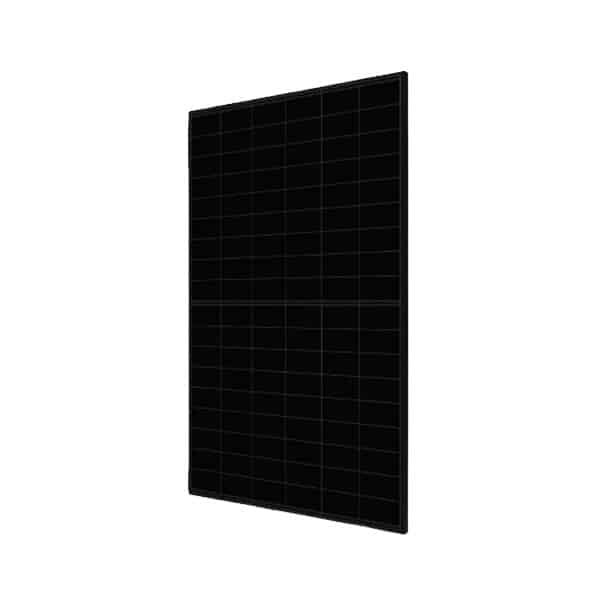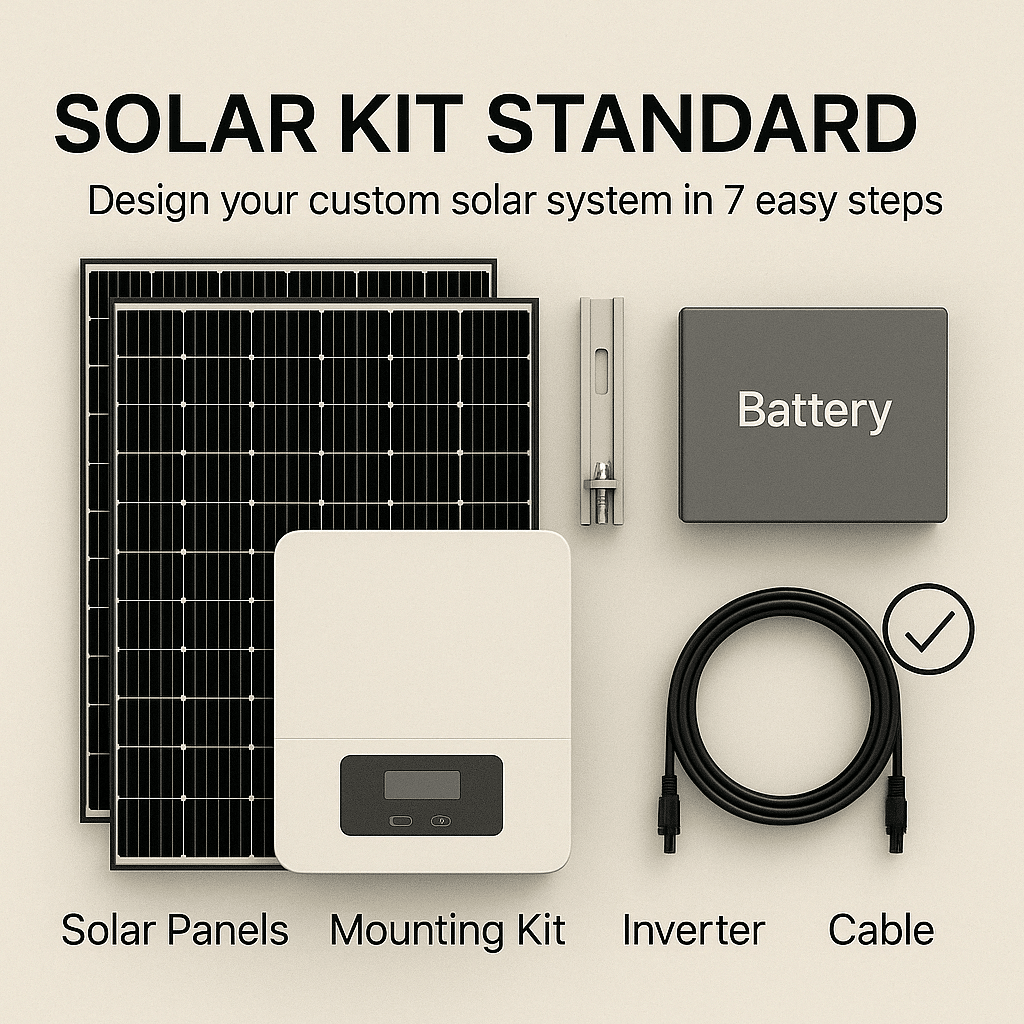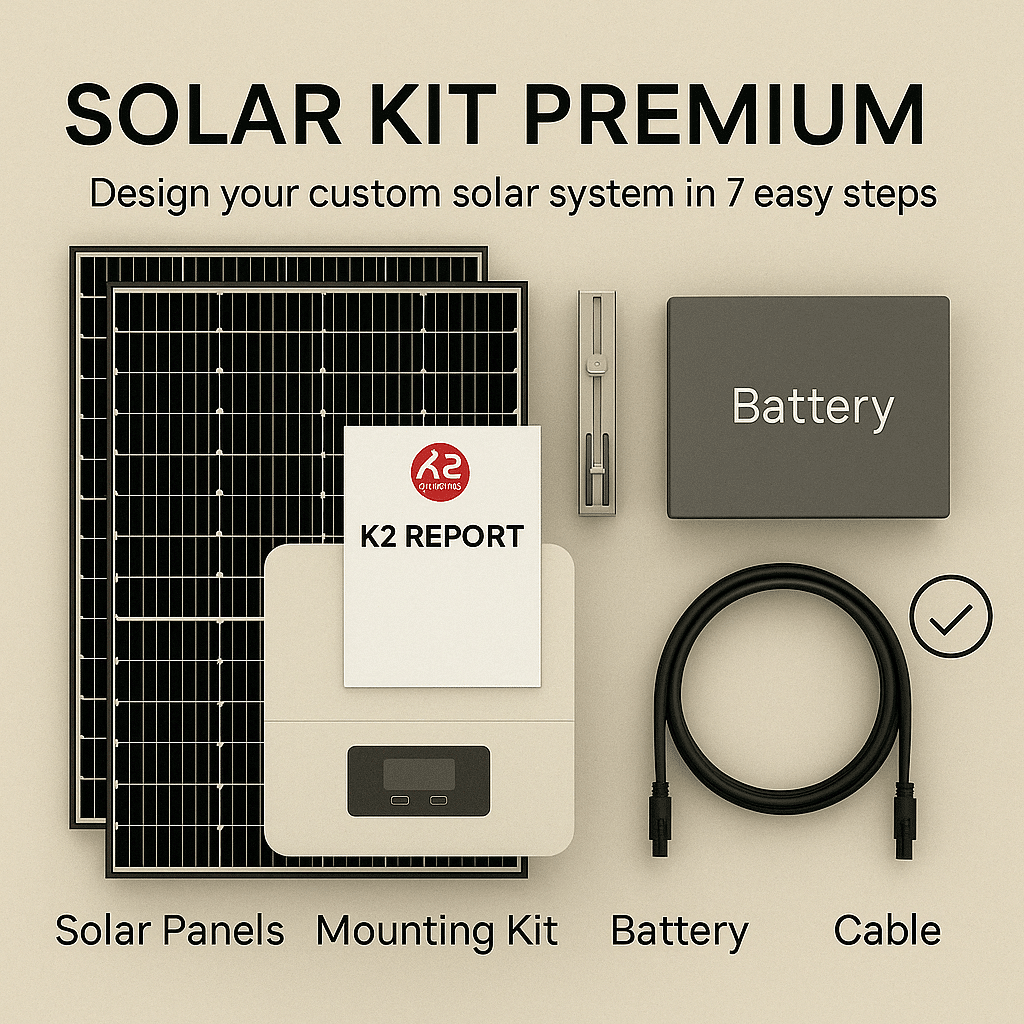📦 Fast Delivery – Order Now!
💸 Shop Safely – 100% Money-Back Guarantee
👨🔧 Lifetime Customer Support
📦 Fast Delivery – Order Now!
💸 Shop Safely – 100% Money-Back Guarantee
👨🔧 Lifetime Customer Support
Are you considering solar power panels for your house? Whether you’re looking to lower your energy bills, become more self-sufficient, or make a positive impact on the environment, installing solar panels at home is one of the smartest investments you can make.
In this guide, we’ll walk you through the key benefits, how the technology works, and what you should consider before choosing the right setup for your home. And if you’re ready to get started, check out our DIY Solar Kits – customizable, scalable, and tailored to your needs.
Here are the top reasons why more and more households are switching to solar energy:
✅ Lower Electricity Bills
Once installed, solar panels significantly reduce your utility costs—sometimes eliminating them altogether.
✅ Energy Independence
Protect yourself from rising energy prices and unpredictable utility grids.
✅ Increased Property Value
Homes with solar systems sell faster and at a premium price.
✅ Eco-Friendly Choice
Using the sun’s energy reduces your carbon footprint and contributes to a cleaner planet.

Solar power panels work by converting sunlight into electricity right on your roof. Here’s how the process unfolds step by step:
💡 Pro Tip: If you’re building a complete system, don’t forget essentials like wiring, junction boxes, and safety disconnects. Our Wiring Essentials Packages include everything you need for a clean, code-compliant installation.

Looking to power your home or business with clean, renewable energy? At AceFlex, we offer a carefully curated selection of high-efficiency solar panels that deliver maximum performance, durability, and long-term savings.
Whether you’re starting a new solar installation or upgrading your current system, our solar panels are compatible with all major inverters, batteries, and mounting systems. From sleek all-black modules for residential rooftops to powerful bifacial panels for commercial projects – we’ve got you covered.

✅ High efficiency for max power output (450W)
✅ TOPCon technology for superior performance
✅ Sleek all-black design, perfect for any setup
Want a full system, not just panels? Start with our DIY Solar Kit configurator and choose the solar panels that match your goals. You pick the components, and we help you put them together.

🔆 Standard Solar Kit – Your Custom Solar System in 7 Guided Steps
Design your solar setup with full flexibility and pre-configured mounting: choose solar panels, inverter, battery, mounting kit, wiring essentials, combiner, and accessories – all step by step and fully compatible.
✅ Includes mounting material from K2 Systems for standard layouts
✅ Choose only the components you need
✅ DIY-friendly and pre-checked for compatibility
✅ 🎁 Battery discount included when bundled

🔆 Premium Solar Kit – Your Custom Solar System in 7 Guided Steps
Design your solar setup with full flexibility and professional support: choose solar panels, inverter, battery, custom mounting kit, wiring essentials, combiner, and accessories – all step by step and fully compatible.
✅ Includes custom K2 mounting kit with professional layout planning
✅ Personalized K2 Report for your roof and module configuration
✅ DIY-friendly & pre-checked for compatibility
✅ 🎁 Battery discount included when bundled
Before you commit to a solar installation, a little preparation goes a long way. These expert tips will help you make smarter decisions, avoid common pitfalls, and get the most out of your investment:
🔍 Assess Your Energy Consumption
Start by reviewing your electricity bills to understand how much power your household uses throughout the year. This will help you size your solar system correctly.
🧭 Evaluate Your Roof
Solar panels perform best on south-facing roofs with minimal shading. Check your roof’s condition, angle, and available space. Not sure if your layout is suitable? Our Premium Solar Kit includes a full K2 mounting plan for custom configurations.
🏛 Check Local Regulations & Incentives
Permits, net metering rules, and tax credits vary by state.
🔋 Consider Battery Storage
Want backup power during outages or at night? Add a battery like the SolarEdge Energy Bank 10 kWh
to store excess solar energy and use it when you need it most.
🛠 Choose the Right Kit Type
AceFlex offers three levels of DIY Solar Kits – from basic to premium – so you can select the right system for your roof and your budget.
📞 Ask for Expert Support
Need help designing your system? Our team is here to assist you with compatibility checks and personalized advice.

The cost depends on the size of your system, panel type, and installation method. On average, a residential system ranges from $10,000 to $25,000 before incentives. With our DIY Solar Kits, you can save significantly by handling parts of the process yourself.
Yes! Many homeowners choose our DIY Solar Kits to build and install their system step-by-step. You’ll still need a licensed electrician for final grid connection, but most of the work can be done independently.
It depends on your energy use and location. A typical U.S. home uses about 10,500 kWh per year and would need roughly 15–25 panels (assuming 400W panels). Use our kit configurator to size your system correctly.
Yes, solar panels still generate electricity during cloudy weather, although output is reduced. High-efficiency panels, like the ones we offer, perform well even in low-light conditions.
At night, your panels won’t produce electricity. If you have a battery system (like our FoxESS or Mango Power batteries), you can store excess daytime power for use after dark. For outages, battery storage or backup generators are essential.
Absolutely. Homes with solar installations are more attractive to buyers and may sell for a premium. Plus, buyers love the idea of lower energy bills from day one.
Buying gives you full control and the ability to claim federal tax credits. Leasing may reduce upfront costs, but long-term savings are typically lower. At AceFlex, we focus on ownership and DIY setups to maximize your return.
Minimal maintenance is required. Occasional cleaning and visual inspections are usually enough. Most modern panels are self-cleaning with rain and come with 25-year performance warranties.
It typically takes 15 to 25 solar panels to fully power an average U.S. household, depending on your energy usage, roof orientation, panel wattage, and local sunlight conditions. A standard 400W panel can generate about 1.2 to 1.5 kWh per day.
Yes! Installing solar panels can significantly reduce your electricity bills, protect you from rising energy prices, and increase your home’s resale value. Plus, it’s an eco-friendly way to reduce your carbon footprint. With federal tax credits and potential state incentives, the return on investment has never been better.
For a home using about 10,000 kWh per year, you’d need around 20–25 panels, assuming 400W output per panel and average sun exposure. You can calculate your exact needs using our DIY Solar Kit configurator.
A complete solar system for a 2,000 sq ft house typically costs between $15,000 and $25,000 before incentives. DIY systems, like those from AceFlex, can reduce these costs significantly while maintaining performance and quality.
Most solar panels last 25 to 30 years and often continue producing electricity beyond that, albeit at slightly reduced efficiency. Manufacturers typically offer performance warranties guaranteeing at least 80–90% output after 25 years.
Yes, but it’s not always beneficial. Oversizing your system beyond your usage may lead to energy export without compensation (if net metering isn’t available). Also, some utilities limit system size based on your average consumption.
No, solar panels don’t produce electricity at night. However, you can store excess energy generated during the day in a solar battery and use it at night.
Yes – with proper system sizing and battery backup, it’s entirely possible to run your home off-grid or with minimal grid reliance. You’ll need to carefully balance generation, storage, and usage.
The “20% rule” often refers to roof coverage guidelines set by local building codes, limiting solar installations to no more than 20% of your total roof area to allow for ventilation and emergency access. Always check with your local building authority.
The biggest drawback is the upfront cost, although it pays off long-term through savings. Other considerations include roof suitability, shading, and occasional maintenance. Fortunately, DIY kits from AceFlex make entry costs much more affordable.
Yes! Homeowners can currently claim a 30% federal solar tax credit (ITC) on the cost of their system, including equipment and installation. Many states offer additional incentives.
AceFlex is one of the leading online retailers of renewable energy products and offers a wide range of solar products. We work with well-known manufacturers and wholesalers and can offer you cost-effective products in the field of photovoltaics so that you too can contribute to the energy transition.
Looking for an experienced team for planning your photovoltaic system without the hassle of doing it yourself? We are your trusted partner, offering comprehensive nationwide solutions. We provide expert consultation and supply of both photovoltaic systems and storage units tailored to your specific needs.
© 2025 Aceflex All Rights Reserved. Design by Media Pantheon, Inc.